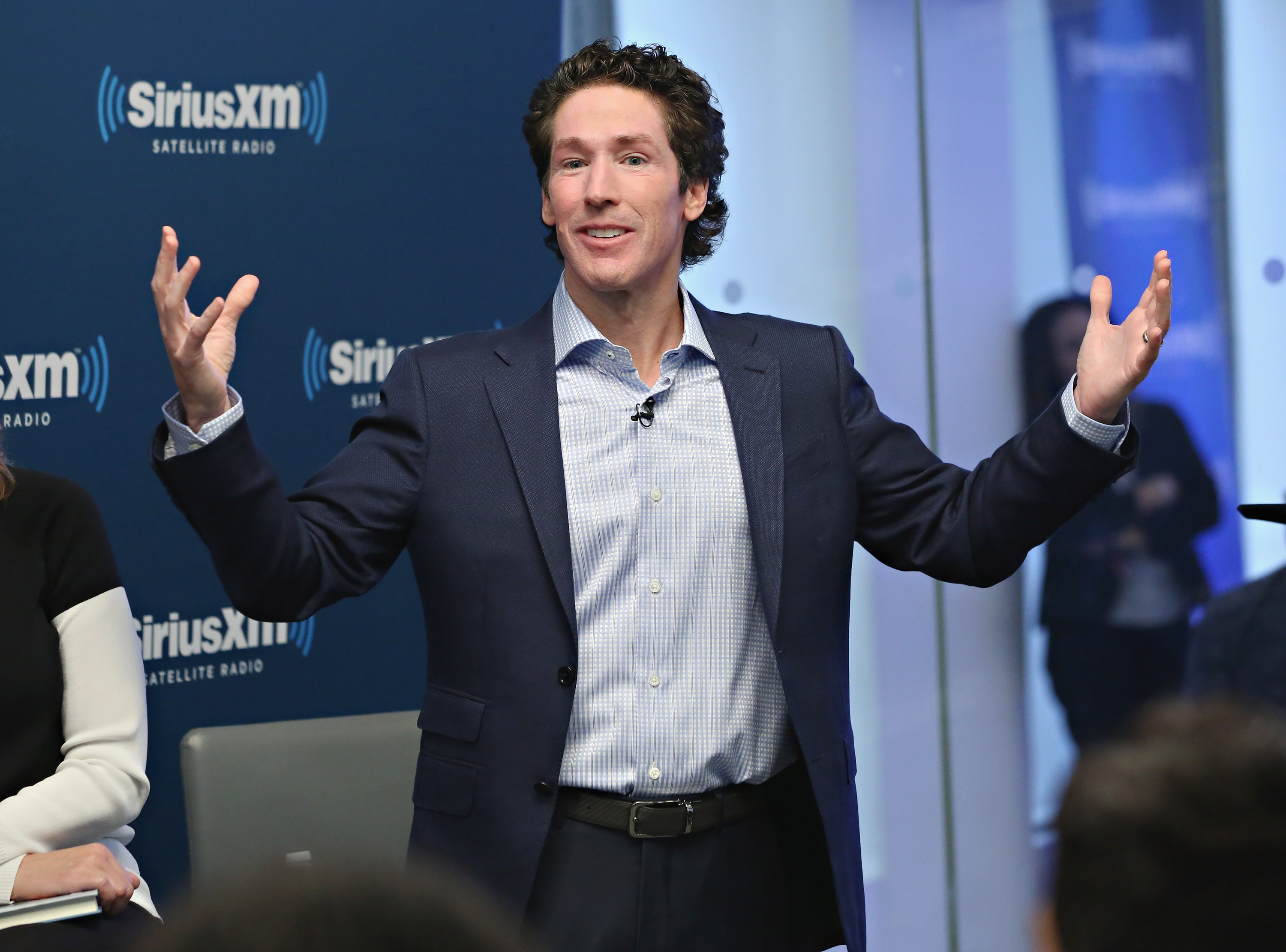Joel Osteen has become, for some people in the state of Texas, the biggest villain not named Harvey.
As the deadly Hurricane Harvey pummeled the Gulf Coast with once-in-a-generation winds and rainfall, Osteen became the center of a social media firestorm after the Evangelical pastor allegedly decided to keep the doors of his 16,800-seat Lakewood Church closed to those fleeing the rising floodwaters of Houston. The church had claimed, on August 27th, that it was “inaccessible due to severe flooding,” although photo evidence that begged to differ only fueled digital outrage.
Front of @JoelOsteen's huge Lakewood Church in Houston at 11 am. Closed due to "flooding". Person who took it asked to be anonymous. pic.twitter.com/gOndOncFuC
— Charlotte Clymer 🇺🇦 (@cmclymer) August 28, 2017
On August 29th, Osteen finally opened his church’s doors to the hundreds of evacuees awaiting shelter. He justified the delay by claiming that Lakewood was “prepared to shelter people once the cities and county shelters reach capacity.”
The Lakewood controversy highlights the important role faith-based organizations play in disaster relief. Churches have long acted as hubs for civic engagement for all sorts of communities, from early African-American slaves to modern Hispanic immigrants. Whereas politicians and celebrities might send “thoughts and prayers” when disasters strike, churches can often be counted on to roll up their sleeves and get to work.
A 2012 report from the University of Southern California’s Center for Religion and Civil Culture detailed the myriad functions of faith-based organizations in the aftermath of natural disasters: responsibilities including food and shelter services, medical and personal hygiene facilities, transportation and logistics management, even temporary childcare for volunteers, all often fall to the church.
In the aftermath of Hurricane Katrina, churches and temples across Louisiana provided shelter for evacuees for months, according to the report, along with complicated technical services, dialysis treatments, and relief workers. The CRCC found that some 506,000 volunteers from faith-based organizations showed up from across the United States to rebuild or repair destroyed homes.
Faith-based organizations are effective for one fundamental reason: They are familiar with, and care about, their communities, in some cases more than federal or out-of-state relief organizations. “Their specific mission and strong motivation to be responsive to needs,” the CRCC report observes. “Their proximity to and familiarity with the communities they serve, [and] their access, either directly or through networks, to unique resources and capabilities directly applicable to the types of services needed following a disaster.”
There are, of course, limitations to how churches organically react to natural disasters: Their responses are often temporary, sustained only by the immediacy of suffering and pain. In the aftermath of Hurricane Floyd in 1999, researchers measuring health promotion in five North Carolina counties quickly pivoted to examine how social capital shaped counties’ disaster response. The found in a 2004 Community Health analysis that, while houses of worship quickly organized food and clothing drives, long-term projects—recovery, as opposed to relief—tended to dampen community responses. “I can get people from all over the United States of America, I’ve even had volunteers from Alaska and Canada, but I can’t get the churches,” one contractor told the researchers.

(Photo: Cindy Ord/Getty Images)
Part of this may arise from the evolving relationship between state agencies and faith-based organizations over the last three decades—the only glimmer of truth in Osteen’s “we waited for the government to call” dodge. A 2009 analysis in the Journal of Information Systems revealed that a lack of consistent, reliable information flow between governmental and non-governmental organizations would often disincentivize faith-based groups from getting involved in relief efforts. Adventist Community Services‘ Monte Sahlin may have put it best when he said that church-organized volunteers “tend to operate on the basis of the personal and want to participate on a personal level. They do not trust large organizations and they don’t want to be put into some bureaucratic system.”
The Federal Emergency Management Agency seems to have heard Sahlin’s message loud and clear: A 2006 analysis of effective emergency management found that FEMA and other state and federal agencies began focusing on “cultural interoperability” with congregations as demographic and network resources to facilitate better coordination and communication with the institutions best equipped to make inroads in affected communities. Probably the best new description of the newfound role in disaster relief came in 2009 when President Barack Obama introduced the White House Office of Faith-Based and Neighborhood Partnerships, in which he declared that faith-based organizations “directly supplement and fill gaps where government authority and resources cannot be applied.”
States have since adopted their own unique mechanisms to better mobilize religious resources. In 2006, the New York Disaster Interfaith Services organized the House of Worship Communitywide Asset and Logistics Management system to better organize and coordinate religious groups to deploy faith-based assets and resources in the event of disaster; the Georgia Emergency Management Agency’s Praise and Preparedness blueprint, designed to equip regional congregations with the training and resources to spring into action amid any major disaster, was greatly expanded after faith-based organizations mobilized as several tornadoes swept through the state in 2013.
But as the Osteen controversy illustrates, institutional support is irrelevant when the religiosity and conviction that are supposed to be indicators of social capital are not present.




